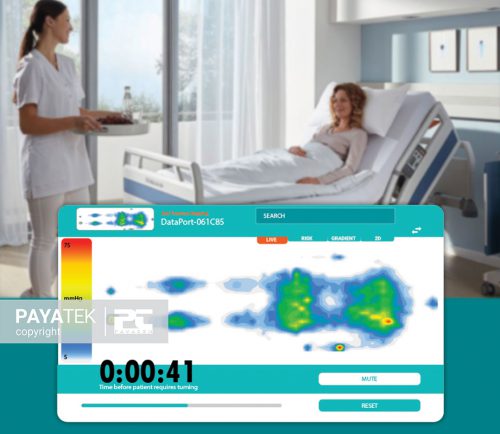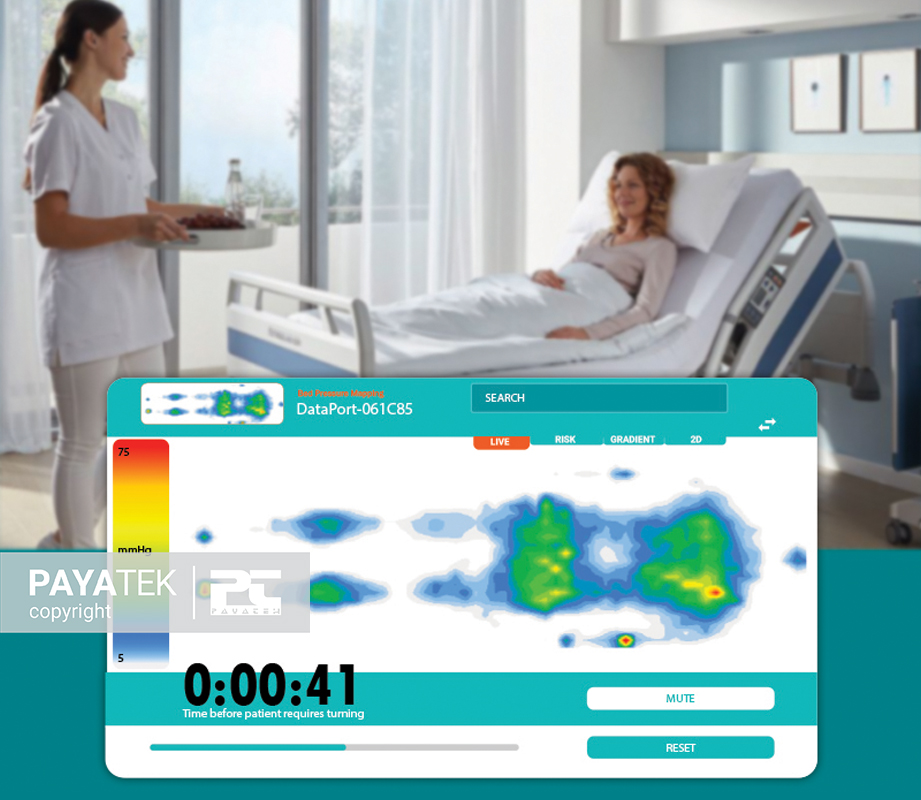Body Pressure Monitoring System (BPMS) – Bed Sore Mattress
The Body Pressure Monitoring System (BPMS) is a thin mattress designed to be placed on a bed or chair to analyze the pressure exerted by the body on its surface. This product is useful in two main areas:
– Medical (Prevention and Treatment)
– Industrial (Designing and Manufacturing Mattresses, Seating, and Furniture Products)
The PT-Mat system is specifically designed to measure body pressure levels on a mattress or bed. Its primary function is to monitor the distribution of body pressure and help prevent the development of bedsores in individuals who have limited mobility.
What is Body Pressure Monitoring System (BPMS)?
The Body Pressure Measurement System (BPMS) is a thin mattress that is placed on a bed or chair to analyze the pressure exerted by the body on its surface. This product serves two main areas:
- Medical (Prevention and Treatment)
- Industrial (Designing, and Manufacturing Mattresses, Seating, and Furniture Products)
BPMS is used for the prevention of bedsores in the medical area.
Application of the Body Pressure Measurement System in the Mattress and Furniture Industry
The Body Pressure Measurement System (BPMS) is a powerful tool that, in addition to point-to-point pressure measurement, identifies high-pressure points and provides precise pressure data from the body surface. This system offers detailed pressure distribution information, enabling designers and researchers to optimize the design of sleep products, seating, and cushions. Its thin and flexible design outlines anatomical structures that concentrate pressure, highlighting regions where a designer should reduce the pressure needed for improved comfort and support.
What is a Pressure Ulcer Mattress (PT-Mat)?
The pressure ulcer mattress is designed to assist in maintaining the health of patients and individuals who are unable to leave their bed or have certain body parts constantly in contact with the underlying surface. Manufactured by PayaTek, it is a significantly more affordable option compared to similar foreign models.
Patients who are unable to move and are forced to lie or sit constantly are at high risk of developing bedsores. These ulcers occur because the constant weight on a specific part of the body reduces blood circulation in that area, leading to tissue damage and, as a result, tissue breakdown.

PT-Mat is a versatile system with numerous applications for measuring body pressure on a mattress or bed. Its primary application is to prevent the development of pressure ulcers in individuals with limited mobility or those who are immobile. This product is used to measure the patient’s body pressure on a bed, allowing for the assessment and monitoring of the patient’s condition, evaluating their comfort level, and identifying high-risk areas for healthcare professionals. This system assists in identifying contact areas, average and peak pressures, as well as the center of pressure and its trajectory, which could potentially lead to the development of ulcers. Therefore, it plays a crucial role in ulcer prevention in those areas.
Another advantage of this system is its applicability in situations where an individual remains immobile on a bed for an extended period. In such cases, the PT-Mat system automatically alerts caregivers and healthcare providers to change the patient’s position or issues a warning if the patient moves beyond the defined boundaries, indicating the risk of the patient falling from the bed.


What is a pressure ulcer?
A pressure ulcer, also known as a bed sore, is damage to an area of the skin that results from prolonged pressure on that area for an extended period. This pressure can reduce blood flow to the affected area, potentially leading to tissue damage and deterioration.
What causes pressure ulcers?
Pressure ulcers develop when there is an interruption in blood flow to the skin for more than 2 to 3 hours. The ulcer begins as a painful red area that eventually turns purple. Without treatment, the skin may break open, and the area can become infected.
In which areas of the body do pressure ulcers mostly develop?”
Pressure ulcers typically develop in areas of the body that aren’t well padded with muscle or fat and that lie over a bone, such as a spine, tailbone, shoulder blades, hips, heels, elbows, and muscle tissue to the cushion.
What does a pressure ulcer look like?
A pressure ulcer, also known as a bedsore, resembles an open wound and may have an unpleasant smell. You might observe signs of infection around the ulcer, including red edges, pus, and an odor. If tissue loss has occurred, the inside or surrounding area changes to black.
Preventing Pressure Ulcers:
Methods to prevent pressure ulcers and deterioration
- Rotating and changing position every 2 hours
- Sitting upright and flat on a wheelchair, changing position every 15 minutes
- Using a soft cushion on the wheelchair and bed to reduce pressure
- Keeping the skin clean and dry
Good nutrition because without adequate calories, vitamins, minerals, fluids, and protein, pressure ulcers cannot heal.
 فارسی
فارسی











